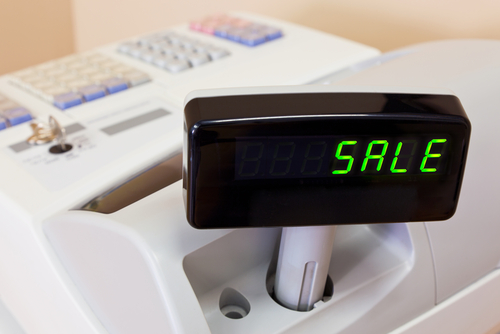Autos and Gas Drag Retail Sales Down, but Outlook Remains Favorable
Retail sales fell for the second month in a row in March, pulled down by declines in motor vehicle and gasoline sales. Retail sales and sales of food services fell 0.2 percent in March following a 0.3 percent drop in February. Leading the decline was a 1.2 percent fall at motor vehicle and parts dealers. The drop was expected as auto makers reported a sharp decline in unit auto sales in March, to a 16.5-million-unit annual rate from a 17.5 million pace in February.
Gasoline sales contributed to the decline in retail sales in March. Gasoline sales fell 1.0 percent following a 0.3 percent drop in February. Month-to-month volatility in gasoline sales is typically related to price moves. However, in March there was a surprising drop in gasoline sales despite retail prices of gasoline rising by 0.9 percent.
Core retail sales, which exclude autos and gasoline, rose 0.1 percent in March and are up 4.1 percent from a year ago. Slowed sales at home-improvement stores were also a major contributor to the drop in total sales in March. That decline follows a strong 2.6 percent gain in February. Over the past year, home-improvement store sales have gained a robust 6.3 percent.
Core retail sales excluding the home-improvement category is used in calculating gross domestic product. For the first quarter, that category was up to a 4.1 percent annualized pace compared to a 3.8 percent rate in the fourth quarter of 2016. That acceleration suggests first-quarter consumer spending will get a boost from this category. However, the decline in unit auto sales will offset some of the gain.
Other notable results in the March retail-sales report include a 2.6 percent jump in electronics– and appliance-store sales, though that category is down 0.7 percent from a year ago. Miscellaneous store retailers reported a 1.8 percent gain and are up 6.5 percent from a year ago, while nonstore retailers (online stores) gained 0.6 percent for the month and are up a very strong 11.9 percent from a year ago.
The Bureau of Labor Statistics released the Consumer Price Index report for March today. The CPI fell 0.3 percent for the month but is 2.4 percent higher than a year ago. Energy prices continue to drive month-to-month volatility in the CPI. Energy prices fell 3.2 percent for the month following a 1.0 percent drop in February and a 4.0 percent surge in January. Excluding energy, the CPI fell 0.1 percent in March and is up 1.8 percent over the past year.
Food prices tend to be another source of month-to-month volatility in the CPI. In March, food prices rose 0.3 percent as grocery-store prices rose 0.5 percent and restaurant prices rose 0.2 percent. Prices over the past year, however, are markedly different, with grocery-store prices down 0.9 percent while restaurant prices have gained 2.4 percent.
The core CPI, which excludes both food and energy, fell 0.1 percent in March and is up 2.0 percent from a year ago. Core-goods prices remain in a deflationary trend, falling 0.3 percent for the month and dropping 0.6 percent over the past year. Surprisingly, core-services prices fell 0.1 percent in March as shelter prices and medical-care services prices decelerated to 0.1 percent increases. Both categories are typically sources of upward price pressure in the CPI.
Today’s reports show the U.S. consumer is continuing to spend at a modest overall pace, selectively choosing where to make purchases each month. The results are consistent with ongoing moderate economic growth. The strong labor market, high level of consumer confidence, relatively healthy consumer balance sheets, and still-low interest rates suggest a high probability of continued expansion in the months and quarters ahead with odds slightly tilted toward an upside tick in the pace of growth.






